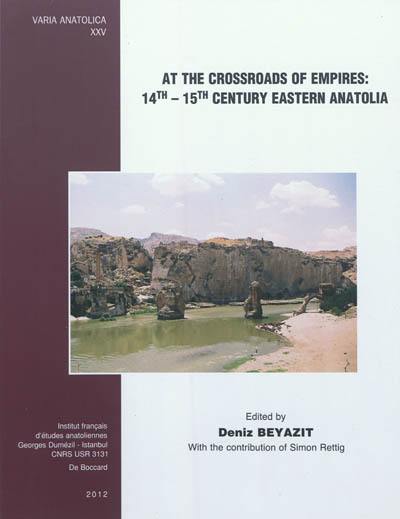
Fiche technique
Format : Broché
Nb de pages : 238 pages
Poids : 720 g
Dimensions : 23cm X 28cm
ISBN : 978-2-36245-002-0
EAN : 9782362450020
At the crossroads of Empires
14th-15th century Eastern Anatolia
proceedings of the international symposium held in Istanbul, 4th-6th may 2007
Quatrième de couverture
At the Crossroads of Empires : 14th - 15th Century Eastern Anatolia
Is a compilation of selected papers présented at a conference held in Istanbul in May 2007, treating history, coinage, architecture, and arts of the book. This publication gathers new scholarship about the remote, previously under-researched eastern parts of modem Turkey, from the final decades of Ilkhanid rule to the eve of the Ottoman empire. This is a very complex period and the lack of sources creates a serious handicap for its understanding. Much of the difficulty in dealing with the history of this region originates from its extreme political fragmentation and the rise of numerous local dynasties following the collapse of Mongol power in the mid-14th century. This book shows that cultural life flourished at various local centres despite long periods of political instability and discord in eastern Anatolia as it became embroiled in the ongoing conflicts between such states as the Mamluks and Ilkhanids, and later, the Timurids and Ottomans.
This region, with its fertile lands and wealthy provincial centers, attracted the attention of the greater regional powers based in Egypt-Syria, Iran and western Anatolia. But the mountainous, somewhat harsh topography and considerable geographical distance from the centres of empires made it an area difficult to control from afar. Thus, local rulers and principalities, dependent, semi-dependent, and sometimes autonomous vassals thrived. Except where the Turkmen Aqquyunlu rulers managed to create their own empire, this area was never in the hands of a single dynasty. This picture of various factions is reflected in the artistic material which has no uniform and homogenous artistic style. Various traditions co-exist, so the area might best be defined as a cultural and artistic platform, where ideas circulated, emerged and interacted.





